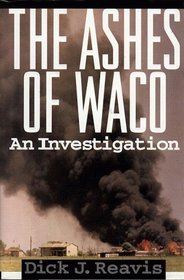Search -
The Ashes of Waco : An Investigation
The Ashes of Waco An Investigation
Author:
The scene outside Waco, Texas, on February 28, 1993 - when dozens of federal law enforcement agents in full combat gear stormed the Branch Davidian compound - could have been cast in England before the Quakers and Pilgrims fled to America, or in the colonies at Salem, or in the new Republic during the nineteenth century, when descendants of the ... more »
Author:
The scene outside Waco, Texas, on February 28, 1993 - when dozens of federal law enforcement agents in full combat gear stormed the Branch Davidian compound - could have been cast in England before the Quakers and Pilgrims fled to America, or in the colonies at Salem, or in the new Republic during the nineteenth century, when descendants of the ... more »
ISBN-13: 9780684811321
ISBN-10: 0684811324
Publication Date: 7/24/1995
Pages: 320
Rating: 1
ISBN-10: 0684811324
Publication Date: 7/24/1995
Pages: 320
Rating: 1
3 stars, based on 1 rating
Publisher: Simon Schuster
Book Type: Hardcover
Other Versions: Paperback
Members Wishing: 2
Reviews: Amazon | Write a Review
Book Type: Hardcover
Other Versions: Paperback
Members Wishing: 2
Reviews: Amazon | Write a Review
Genres:
- History >> Americas >> United States >> General




